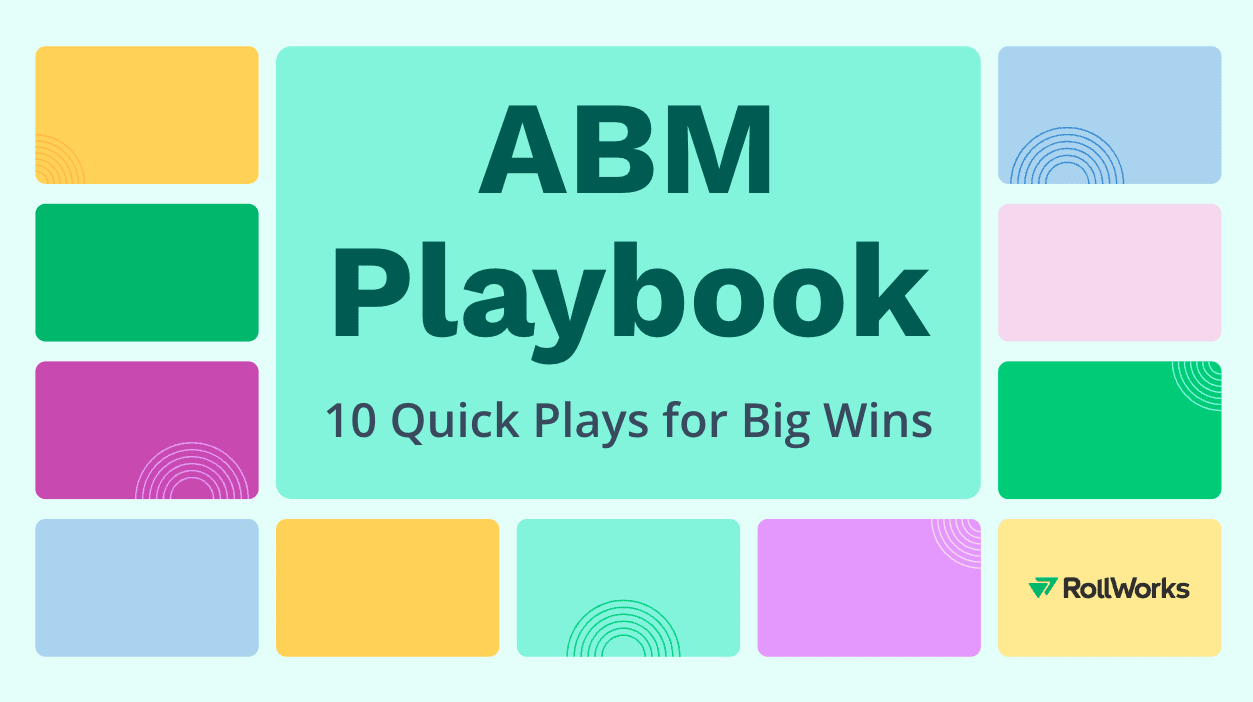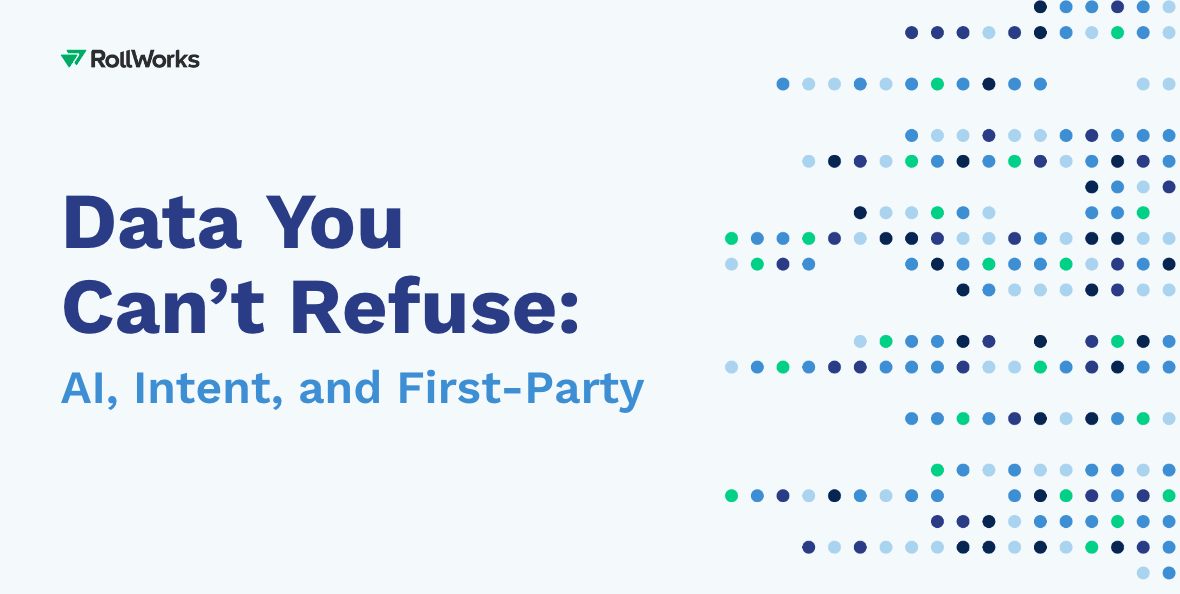When most companies were rethinking their marketing strategies amid a global pandemic, Snowflake was on track to become one of the fastest-growing software companies in history. In the (rare) case you haven't heard, Snowflake's technology delivers the Data Cloud, a global network where thousands of organizations mobilize data with near-limited scale and performance.
After explosive growth and an IPO, the company was faced with a new challenge: How do you continue to adapt, grow, and scale at the level needed to maintain an enterprise-level brand?
As an account-based organization, getting there involved an account-based marketing (ABM) team of six. But scaling beyond 2000+ 1:1 campaigns would mean answering—and solving for—questions like:
- Are we siloed in how we work with other teams?
- Is engagement enough?
- Can this scale?
Here’s how Snowflake continues to use technology and collaboration to build 1:1 ABM programs that scale.
1. Rethink the customer experience
The buyer’s journey is rarely linear. As marketers, we know this, but our tactics don’t always reflect or support this reality.
For Snowflake, rethinking the customer experience meant looking at how data flows between systems—and creating optimized campaigns to guide customers through their journey as quickly as possible.
IDENTIFYING TARGET ACCOUNTS
Snowflake takes a two-step, hybrid approach to identifying the accounts they can win.
First, the ABM team speaks to its Salesforce to find out: whether they’ve talked to an account, who they’ve talked to, where they’ve had success, and which products the account has an interest in. If they have that kind of conversational data, it’s enough to get started.
If they don’t—and the account is totally cold—they turn to intent data to find out which non-branded topics they’re surging on. The goal is to enter the buying cycle before their targets even realize Snowflake is an option. The strategy is to only pursue accounts they know something about.
ATTRACTING TARGET ACCOUNTS
Once the ABM team defines who to target, the next step is understanding which channels are most effective.
Since no two buyers or verticals are alike, this will inevitably mean identifying different channels to get in front of the right buyer at the right time. But choosing channels is just the first step—to earn attention at scale, Snowflake relies on a core mix of MAP, ad, and sales engagement tools:
- RollWorks: As their full-suite ABM platform and supporter of account-based advertising, all 2000+ account-based marketing campaigns get pushed through RollWorks.
- LinkedIn: Snowflake also uses LinkedIn’s sponsored updates, InMails, and carousels to attract target accounts.
- Direct Mail: SDRs use e-gifts to get an “in” with lower levels within an account, and then they spread that influence as they work their way up in the selling motion.
ENGAGING TARGET ACCOUNTS
It's not enough to grab their attention — you also have to keep it. That's why Snowflake thinks strategically about where they send the people who click. Their primary destination is Uberflip, where the team customizes the experience based on intent data and other signals. Beyond serving relevant content, they also work hard to provide one experience from the ad to the page:
- Consistent branding
- Persona-based messaging/creative
- Custom CTAs based on the sales stage
Finally, they bolster technology-based personalization with a human narrative. Most of their destination pages feature a note from an actual sales rep along with a photo.
2. Become an integrated ABM function
You can't scale account-based marketing without making the deliberate effort to align with other functions at your organization. In Snowflake’s case, their ABM team was already well-aligned with sales, but they needed to continue driving alignment with the rest of the org—and they also needed to make that alignment visible in their output.
Here are a few ways Snowflake removed silos and helped ABM become a supportive force for key areas within the org:
PARTNER MARKETING
Snowflake co-brands with some of the most well-known companies in tech, and they use this advantage to target top accounts together. They also bring their sales reps into the process by checking in to identify blockers and finding ways for their partners to help.
For example, if there’s a partner in their ecosystem who can help unblock a deal or provide a C-level introduction, the ABM team works with the partner marketing and sales teams to facilitate this. Then they create cohesive messaging and content to promote across the funnel with that partner.
SALES OPS
Snowflake's ABM team works closely with sales ops to create models for fit and timing. The sales ops team defines fit (based on firmographic factors like wallet size, type of company, etc.) while the ABM team, in partnership with the marketing intelligence team, determines the timing.
They’re also fortunate enough to have a marketing intelligence team now, but not long ago, they relied on one ABM Data Scientist to create a model for engagement that accounted for things like seniority, industry, pages visited, and campaigns responded to.
With machine learning currently in play, Snowflake knows how likely an account is to create an opportunity before anyone talks to a sales rep—and they leverage this data to decide who to target from the very beginning.
FIELD MARKETING
The ABM and Field Marketing teams create 1:1 events for must-win accounts and drive registration within key personas and lines of businesses within those accounts.
They also help promote attendance via their favorite “attraction” tools—LinkedIn, RollWorks, and sometimes Sendoso. They round out their collaboration by working with SDRs to craft customized messaging for effective post-event follow-up.
CUSTOMER MARKETING
Existing customers make up about half of the accounts the ABM team targets, so they work closely with sales teams and marketing intelligence to identify opportunities within these accounts.
“We’re looking at what parts of the product they’re not already using and how we can get them to use them, when renewals are coming, and how to spread that sphere of influence. We’re achieving a 50 percent new opportunity rate with existing customers we target with ABM.” — Hillary Carpio, Director of Account-Based Marketing, Snowflake
SALES DEV
SDRs weren't initially included in Snowflake's ABM efforts, but since the organization nestled the team within marketing, it’s now an expected and critical part of the outbound prospecting process.
3. Design and deliver cohesive reporting
Snowflake faced a challenge shared by many marketers who practice ABM: How do we translate engagement metrics into a complete story that not only explains how an ABM program impacts the company, but also offers actionable insights other teams can leverage.
There’s only one way to fix this problem: Extending your reporting capabilities to provide the full-funnel impact of ABM—in this case, at the 1:1 level.
INTENT
By viewing buying behavior across the web and looking at trends to understand when an account "raises its hand" without realizing it, the ABM team identifies new opportunities when they don’t know the account.
ANON ENGAGEMENT VS. KNOWN ENGAGEMENT
ABM is known for being great at anonymous engagement, but the right campaign setup can help those accounts become known more quickly.
In Snowflake’s case, producing 1:1 pages on Uberflip means they can assume with some certainty that all of the traffic to a given page is from a given account. This makes the next phase—collecting their information or placing cookies to retarget—much faster.
ACTIONABLE INSIGHTS > SALES TOUCHES
Once an account becomes known, what insights can become actionable? To help figure this out, Snowflake works with their data science team to look at every account in the ABM funnel.
In addition to looking at metrics like pages visited or events attended, they also look at the total number of ABM accounts to determine:
- How many anonymous accounts are engaging
- How many accounts are becoming known
- How many sales touches occur on each account
- How are those touches translating into meetings and opportunities down-funnel?
“This is important because sometimes an AE or SDR will nominate an account and then not touch it. We want to make sure we can stay aligned at this stage of our ABM funnel.” — Hillary Carpio, Director of Account-Based Marketing, Snowflake
Finally—and with the help of the data team—they use their own product to combine the data into one place where they can report on it.
MEETINGS > OPPS > WINS > NEW OPPS
This is a standard part of any marketer's funnel, but Snowflake connects it with account-based marketing to see intent—before an account ever engages with its brand—all the way down to new opportunities. With this holistic view, they can see exactly how that journey comes to fruition.
4. Simplify your workflows (or bust)
What does scaling mean when you're already running thousands of 1:1 campaigns?
For Snowflake, it didn’t necessarily mean driving more volume, it meant diving under the hood to tighten up their operations.
The goal was to improve efficiency so the team could focus more on optimizing campaigns for consistency, relevancy, and personalization—particularly as the Snowflake brand becomes a bigger player in the enterprise market.
HUMAN PROCESSES
To get people on the same page, Snowflake created project plans to ensure every process has clear timelines and ownership. For instance, the ABM team created guidelines for sales teams so they know exactly what sort of information to send when they need an ABM campaign.
NEW ABM PAGE TEMPLATE
After looking at engagement rates, the team decided their pages needed a better visual hierarchy to encourage visitors to either engage with their first piece of content or contact a sales rep. To accommodate more custom content and personalization, they built a new account-based marketing page template.
LEVERAGE TECHNOLOGY TO ENSURE ACCURACY AND UPDATES
Any 1:1 campaign worth its salt will include the human element. But there also comes a time when it makes more sense to let technology do its job—like when operating 2000+ campaigns. From changing trademarks to updating messaging, Snowflake uses a few different tools such as Intellimize to make edits on the fly across all their campaigns.
MOVE TO ROLLWORKS AS SINGLE AD VENDOR
Using multiple ad vendors made reporting and budgeting more difficult than necessary. To streamline these and other processes, the ABM team consolidated their tech stack to just one solution.
5. Get SDR obsessed
If there's one universal takeaway about scaling ABM, it’s this: It’s not about focusing on your ABM goals, it’s about enabling success for the departments you’re servicing.
For Snowflake, this meant launching programs to empower their sales teams and partnering with the head of their SDR team to help them do it.
In addition to absorbing the SDR team under marketing, Snowflake practices what’s known internally as the “1-2 punch.” Working closely with members of the ABM team, select SDRs only pursue certain accounts after they’ve engaged with account-based marketing.
First, the ABM team warms the account for 2-4 weeks. Then an SDR begins engaging the account directly, and when the time is right, they pass the opportunity to an AE. In the midst of all this, the ABM team is already warming another account.
SNOWFLAKE'S ABM RESULTS
In the end, Hillary’s team scaled the 1:1 experience to over 2,000 top accounts throughout the funnel, with a 75% increase of SDR-booked meetings in ABM accounts (QOQ).
“We needed to make sure that when you see an ABM campaign, it’s reflective of not only sales input, but also product marketing, partner marketing, field marketing, and our SDRs. We needed a way to co-create one cohesive message for our key accounts.” — Hillary Carpio, Director of ABM, Snowflake
To follow Snowflake’s lead, one example of a quick win is implementing bi-weekly alignment meetings between AE, SDR, and ABM leads. Snowflake saw a 38% increase in ABM accounts with SDR meetings booked in them, resulting in a 3x increase in meeting rate in SDR hyper-aligned 1:1 accounts (QOQ). Other key strategies included custom landing pages and gifting for high-value accounts.
Scaling ABM programs beyond an IPO
Snowflake doesn't underestimate the value of culture. They’re working on making ABM ingrained in everyone’s function (especially SDRs). They’ve expanded their cross-functional ABM strategy globally, where a culture of cross-functional ABM teams exists in EMEA and APJ.































